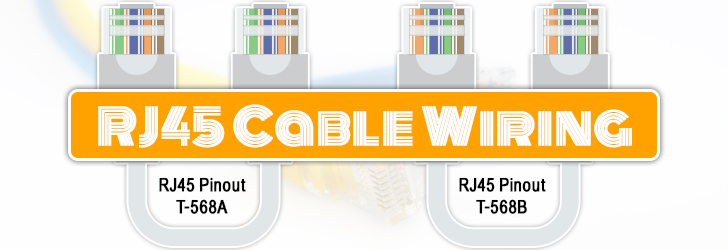
If you are looking to buy cat6 ethernet cables, you are going to have to choose from two options: Cat6 plenum cable and riser. These are two different variants of the same bulk ethernet cable. The outer jacket of these cables is designed for specific uses that make them different.
As network admins or cable installers, choosing the right cable is very important. Choose the wrong cable and you will end up with a non-functional network costing you money in replacement and purchasing. So it is best to understand where both of these cables are used, and what their pros and cons are.
Understanding Cat6 Ethernet Cables
Cat6 ethernet cable is a standard for high-speed data transmission. It's designed with eight conductors capable of supporting gigabit ethernet speeds. While it's a versatile cable, its specific application within a building is determined by its jacket type. Category 6 (Cat6) Plenum Cable is a variant of the Category 6 ethernet cables and they come with the CMP-rated indoor jacket. The riser cables on the other hand come with a CMR jacket that is designed for vertical installations.
Cat6 Plenum Cable: A Focus on Safety
The cat6 plenum cable is specifically made for indoor air handling spaces. For instance, the space above dropped ceilings or below-raised floors. It is also designed for HVAC ducts. However, the most important specification of the plenum cable is its CMP-rated jacket. It doesn’t catch fire. It also doesn’t emit toxic smoke. Also, it is highly durable and can withstand extreme environmental conditions.
The benefits of using Cat6 plenum cable extend beyond fire safety. It's durable and capable of withstanding the rigors of various indoor environments. Its versatility makes it suitable for a wide range of network installations.
Due to its fire safety properties, plenum cable is often mandated by building codes for specific areas. Commercial buildings, data centers, and any facility with extensive air handling systems typically require plenum cable.
Cat6 Riser Cable: Vertical Connectivity
Cat6 riser cable is designed for vertical cable runs within buildings. It's commonly used in elevator shafts, stairwells, and to connect floors. While it is fire-resistant, its specifications are less stringent than those of plenum cable.
Riser cable offers a balance of performance and cost-effectiveness. It delivers excellent data transmission speeds, making it suitable for most network applications. Additionally, it's widely available from various manufacturers.
While riser cable can be used in residential homes and small offices without extensive air handling systems, it's essential to adhere to local building codes. Some areas may require plenum cable even for vertical runs.
Key Differences Between Plenum and Riser Cable
The primary distinction between plenum and riser cable lies in their fire safety ratings. Plenum cable offers superior fire resistance, making it the preferred choice for air-handling spaces. Riser cable, while fire-resistant, is not designed to withstand the same level of fire exposure.
Another critical difference is their intended use. Plenum cable is specifically for horizontal runs in air handling spaces, while riser cable is for vertical runs within building structures.
Cost is another factor to consider. Plenum cable is generally more expensive than riser cable due to the added fire-resistant materials in its jacket.
Choosing the Right Cat6 Cable
Selecting the correct Cat6 cable is crucial for optimal network performance and safety.
Location matters.
Plenum cable is essential for air handling spaces due to its fire resistance. It prevents fire and smoke spread. Riser cable is suitable for vertical runs but check local building codes. Consider the cable's proximity to potential heat sources.
Adhere to building codes.
Before installing any cables, first, make sure that the cables meet local regulations and obtain necessary permits. Non-compliance can lead to fines and safety hazards. Consult with a building inspector for clarification on specific requirements.
Consider budget and future needs.
Plenum cable is often more expensive but essential in specific areas. Assess your budget and network growth plans. Factor in the long-term cost of potential fire damage versus the initial cable investment.
Seek expert advice.
A network professional can guide cable selection, installation, and troubleshooting. Their expertise can help prevent costly mistakes and ensure optimal network performance.
Conclusion
When choosing between Cat6 Plenum Cable and Riser cable, it is important to understand your unique networking requirements. The plenum cable is designed for indoor horizontal runs whereas the riser is designed for vertical runs in enclosed spaces. Overall, the plenum cable is versatile and safe for air-handling spaces due to its non-toxic smoke specifications. But the riser can emit small amounts of toxic smoke should it catch fire.
 FAQs
FAQs
The cat6 plenum cable has a CMP-rated jacket which does not emit toxic smoke and is highly durable. The riser cable, on the other hand, features a durable CMR jacket that produces small amounts of toxic smoke in case of catching fire.
The plenum-rate Cat 6 1000ft cable is designed for use in indoor air handling spaces such as above-dropped ceilings and below-raised floors.
The bulk Category 6 riser cable is suitable for vertical cable runs like those in walls or between floors. It's generally less expensive than plenum cable.
Plenum-rated (CMP) Cat6 cable is more expensive due to its fire-resistant properties and additional materials used in its construction. The Riser cable does not cost more than the CMP because it has a lower cost of manufacturing.
No. Building codes often require plenum cables in air handling spaces for safety reasons. Consult local regulations before making a decision.
Related Posts
Share this post
Leave a comment
All comments are moderated. Spammy and bot submitted comments are deleted. Please submit the comments that are helpful to others, and we'll approve your comments. A comment that includes outbound link will only be approved if the content is relevant to the topic, and has some value to our readers.


Comments (0)
No comment